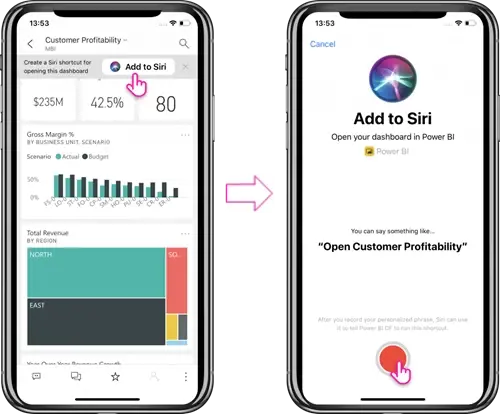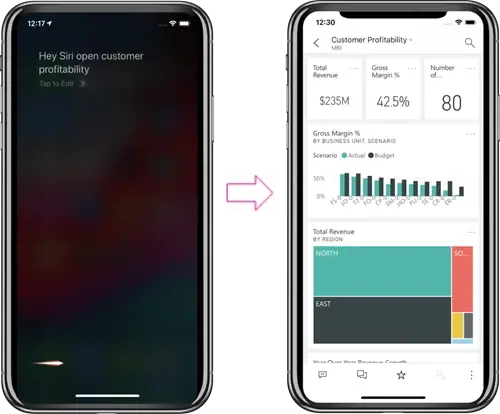How AI Can Boost Predictive Maintenance In Manufacturing
How can Artificial Intelligence be used for predictive maintenance in manufacturing? New software technologies are helping business operations.

With capabilities only limited by imagination, Artificial Intelligence (AI) is a brilliant tool to improve customer service both directly and indirectly. Chatbots are your front line of contact on your website and when integrated with an advanced AI engine, the chatbot can help customers without any human interaction. Chatbots could tell customers what’s in stock, recommend products and recognize the customer logging in and ask if they want to reorder their previous order.
This is all great, but Microsoft have principles and guidelines you should follow when developing a conversation AI bot. This will safeguard your business as well as making the bot efficient with customer service.
Microsoft’s principles are designed for AI’s to be trustworthy with important ethical values.
The way Microsoft has written these principles make them sound like the Three Laws of Robotics from i-Robot! So we put together a little video to go through the principles:
To summarise:
Fairness: AI systems should treat all people fairly
Reliability & Safety: AI systems should perform reliably and safely
Privacy & Security: AI systems should be secure and respect privacy
Inclusiveness: AI systems should empower everyone and engage people
Transparency: AI systems should be understandable
Accountability: AI systems should have algorithmic accountability
Microsoft say you must follow the guidelines below when developing/ designing a bot. These guidelines are designed to fit into the principles to ensure your conversational AI bot is designed in a way that it earns the trust of the user.
Here is a summary of the 10 guidelines developers must follow when designing bots.
The purpose of your bot should be ethically designed, especially when it’s for a consequential use; meaning it will access services that can be sensitive to the user. If not design in the correct manner, then it could put a negative impact on the user.
Users will be more inclined to trust a company if they are transparent about the use of bot technology. The User will also trust the bot if the company isn’t hiding the fact that it’s a bot they’re interacting with. If the user knows it’s a bot, then they will understand that the bot is there to serve their needs and the limitations on what it can do are clear.
Bots won’t be able to undertake every single task. Some tasks need human judgement, so you will need to set a protocol up that allows a seamless transition from a bot to a human moderator. You don’t the user going around in a continuous cycle of bot phrases because it doesn’t know what to do.
Bots can be designed with almost human personas, so it’s crucial that they interact respectfully with users. Handling misuse and abuse can be solved with safeguards and protocols. You want your business to have a good reputation and if you’re having a rogue bot on you site, it could lead to many problems.
Make sure your bot is reliable for the purpose it serves. Also take care that Artificial Intelligent systems are probabilistic; meaning they will not always give the ‘correct’ answer. Set up a process where at the end of the conversation, a feedback survey pops up. This feedback will guide you on what to improve; ensuring that the bot is reliable with the given purpose.
There could be a possibility that AI systems will identify different cultures and introduce new biases; which leads to discrimination. This is one of the top concerns in the community of AI, so development teams MUST ensure their bots treat all people equally.
From the arrival of GDPR, Privacy of data is something you must think about. You might be designing a bot for personal areas where the bot will learn a great deal about your users to help it undertake tasks. You should give users the ability to investigate what data the bot has taken from them and offer a function on how it can be used.
Relating to the previous guideline, every user has the right to know that their data is handled with care. Follow the best/ most appropriate security procedures for the type of data your bot will be handling. You bot could have an authentication system/ process in place to ensure they are talking to the right user and not an imposter. Your bot should also be resilient; meaning any abnormal behaviour and activity from a user’s account will be noticed. It should also be able to prevent itself from any form of manipulation. Have regular security reviews to ensure the system is up-to-date and prevent it from being hacked or misused in any other form.
Bots can be beneficial for everyone, so may as well design so it everyone can use it. People with disabilities should benefit from your bot’s capabilities. Microsoft’s mission is to give people the opportunity to achieve more with the new technological advancements that can be used by people with disabilities, including the users who use assistive technology.
Would recommend you test your bot with disabilities and get feedback on how to improve it for their needs.
There are many more years to come before AI bots can act autonomously and accept responsibility for their actions. If that day will ever come, developers are responsible for any actions/ operations the bot undertakes.
These are a summary of the Microsoft Guidelines, if you would like to read the full details, please see the Microsoft Document.
Microsoft very much see that Artificial Intelligence is the future of technology, and how we interact with that as a major aspect of how it works. The intelligent reporting of Power BI, for example, is being brought to the bot world with Siri integration.
The Power BI Mobile iOS app is now integrated with Siri shortcuts, allowing users to just say “Hey Siri, open my report” and you’ll get the content you’re looking for.

The Add to Siri button in the iOS app makes it easy to record a phrase that it will associate with that particular report. Now, when you wabt to access the dashboard or the report you created a shortcut for, just say just “Hey Siri” and the phrase you recorded. Power BI will automatically open with the item you asked for in focus.

See Microsoft's release notes on the Siri Integration:
As time goes on, leading software suppliers such as Microsoft are pushing forward with AI technology. As we discussed in a previous blog, what we have regarded as future technologies are here now. It is important to keep up with the new tools, however with new capabilities come new responsibilities.
How can Artificial Intelligence be used for predictive maintenance in manufacturing? New software technologies are helping business operations.
Summarising technology changes for manufacturing companies in 2023 and what that means for 2024 such as artificial intelligence and industry 4.0
Manufacturing, Warehousing and distribution company Colorlites implements Business Central ERP with Dynamics Consultants in a phased approach